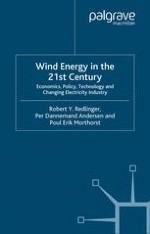Wind energy is the great success story of modern renewable energy. Since the industry's rebirth following the energy crisis of the 1970s, thousands of wind energy projects have been installed around the world. The technology today is competitive with traditional fossil-fuelled electricity generation. Wind Energy in the 21st Century explores the current economic, financial, technical, environmental, competitive, and policy considerations facing the wind energy industry. With discussions of the latest electricity industry trends including deregulation, green markets, and tradable renewable credits, this book is a must-read for energy policymakers, researchers, and energy industry professionals.
